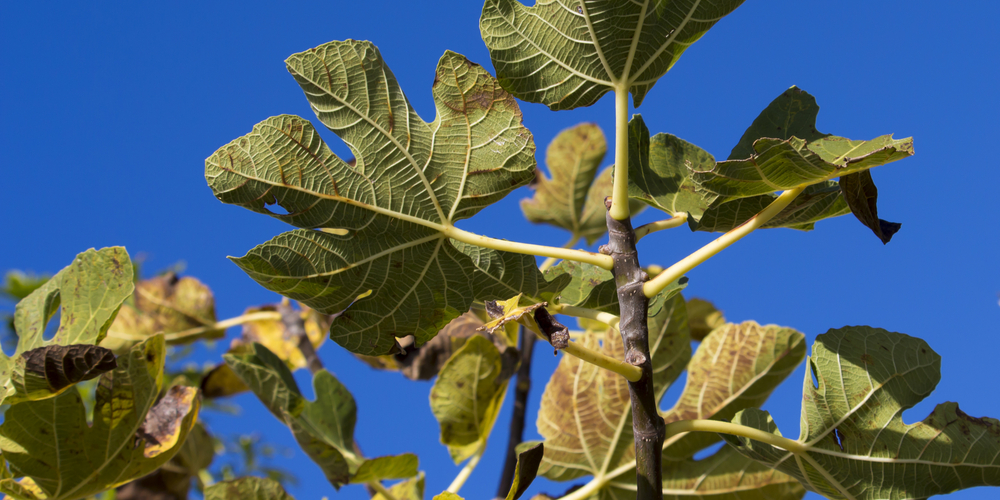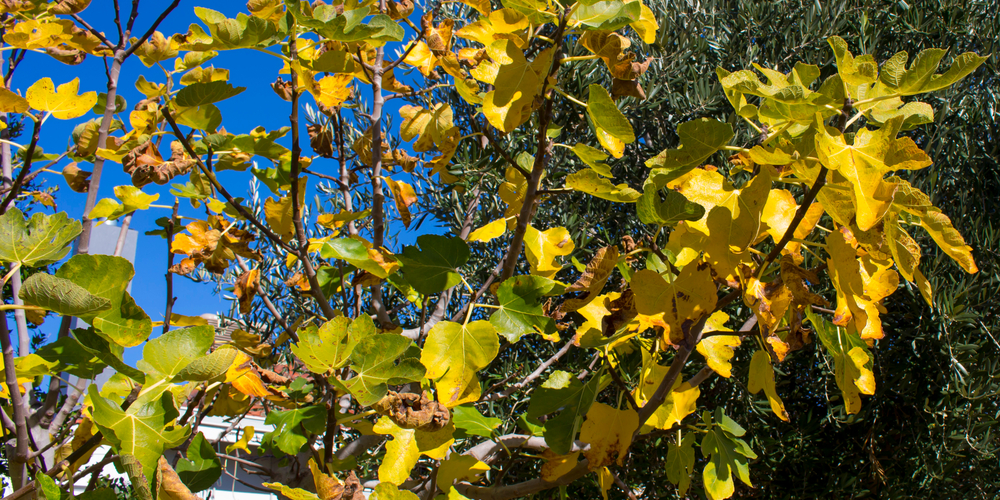‘Is my fig tree dead?’ might be the first question on your mind when you check out your seemingly lifeless fig tree. However, there are some things you can do to make sure that it’s still alive before you dig it up or throw it out.
How Can I Tell If My Fig Tree is Still Alive?

Other than waiting for your fig tree to show signs of life, e.g., new growth coming out of old wood, you can use a simple trick that involves nothing more than your nails.
There’s an easy way to tell if your fig tree is dead or alive- scratch the topmost bark of the tree using your nail and get a visual of the color. If it’s green then you’ll know that it’s still alive and probably trying to grow new leaves.
If it’s brown, try to move on to the lower bark section and do the same thing. Continue until you’ve found a green bark underneath or none at all. Mark the area where the bark is still green and prune off all the dead growth, including the main branches and dead ones so the tree can concentrate on reviving itself.
Although the tree may appear to be dead from the ground up the roots might still be alive and waiting for water or the season to end. The good news is that fig trees are hardy and tend to get into a dormant state when winter comes or when temperatures hit freezing numbers.
Remember, fig trees love the warmth and the sun, and most varieties will have a USDA hardiness zone of 8 to 10. Fig tree owners living outside these zones will probably need to ‘overwinter’, or bring their container plants indoors or set up anti-frost measures for a higher chance of making it through.
Can a Dead Fig Tree Come Back?
Fig trees tend to come back after a winter season. They normally enter a dormant phase and might appear dead to the casual observer.
It’s worth noting that during this time the tree might start to shed its leaves. Beginners often mistake this and throw away their plants, which are really healthy and sleeping specimens.
The key thing to do is wait it out until early spring, then constantly check for growth in the form of suckers or new leaves in old wood.
Caring for a fig tree is different during winter and when it’s in a dormant state. The most important thing to remember is that it won’t need as much water as it does in the growing season- perhaps a watering once a month will suffice and keep it alive.
The same goes for fertilizer. In short, do not fertilize and water sparingly, but do observe its light and temperature requirements.
Fig trees love warmth and sunlight, and if you have them in containers then you should put them in a warm indoor location that gets bright light. The only time they can go back out is after the last risk of frost has passed and the temperature is starting to rise.
How to Save a Dying Fig Tree
A dying fig tree can still be saved. The most important thing is to identify the cause of the problem and to try and solve it, or changing the tree’s environment so it’s more conducive to their growth.
The first thing you should do is observe the fig tree for any telltale signs. Brown spots might indicate that it needs more water, while yellowing leaves and stunted growth could mean that you need to feed it.
When there are holes and pests then you’ll want to reach for the appropriate insecticide or pesticide solution.
More often than not you can still revive a dying fig tree by adjusting your watering.
Too much can lead to root rot, while too little can lead to leaf loss and eventual death. It’s recommended that you hold off on the fertilization as it won’t immediately help.
Fig trees in containers can be saved by giving them more light, more or less water and addressing what they need. If the soil is too wet and there’s no drain, it’s best to dig up the fig tree and relocate to a well-drained soil and pot that has holes.
Related Article: Is Epsom Salts Good For Fig Trees?

